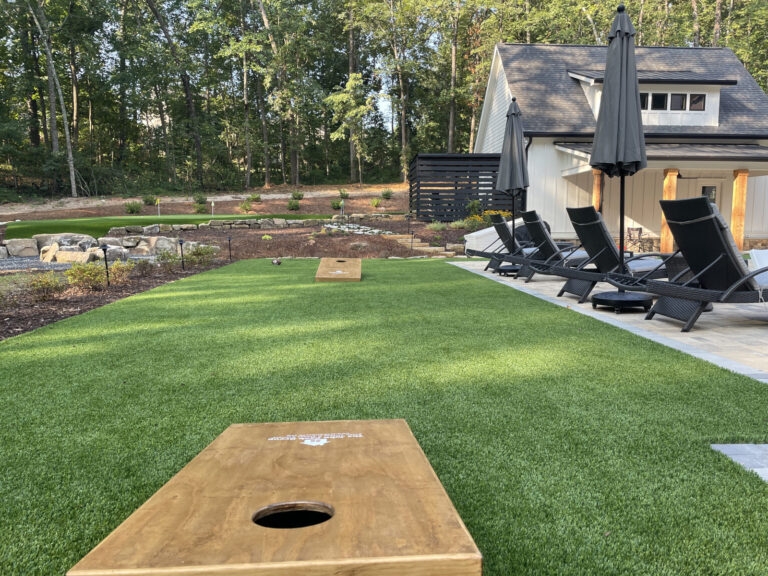Pools & Play Areas




Using synthetic turf in pool and play areas offers several benefits that enhance the enjoyment, safety, and aesthetics of these spaces. Here are the key advantages:
1. Safety
- Non-Slip Surface: Synthetic turf provides a slip-resistant surface, reducing the risk of accidents and injuries around wet pool areas.
- Soft Landing: The cushioning effect of synthetic turf makes it an ideal surface for play areas, offering a softer landing for children and reducing the likelihood of scrapes and bruises.
2. Durability
- High Traffic Resistance: Synthetic turf is designed to withstand heavy foot traffic, making it ideal for busy play areas and poolside spaces that see frequent use.
- Weather Resilience: It is resistant to various weather conditions, including heavy rain, intense sun, and frost, ensuring a consistently appealing look throughout the year.
3. Low Maintenance
- No Mowing or Trimming: Unlike natural grass, synthetic turf doesn’t require regular mowing or trimming, saving time and effort.
- Easy Cleaning: Synthetic turf can be easily cleaned with a hose, and it doesn’t accumulate mud or dirt, keeping pool and play areas tidy and hygienic.
- No Fertilizers or Pesticides: There’s no need for chemical treatments, making it a safer option for children and pets.
4. Aesthetic Appeal
- Lush, Green Look: Synthetic turf maintains a vibrant green appearance all year round, enhancing the visual appeal of pool and play areas.
- Uniform Texture: It provides a consistently even surface, free from the patchiness and uneven growth common with natural grass.
5. Comfort
- Temperature Control: High-quality synthetic turf often includes temperature-regulating technologies that help keep the surface cooler, even under direct sunlight, making it more comfortable to walk and play on.
- Soft Feel: Modern synthetic turf is designed to mimic the feel of natural grass, providing a soft and comfortable surface for bare feet.
6. Environmental Benefits
- Water Conservation: Synthetic turf doesn’t require watering, significantly reducing water usage, which is particularly beneficial in drought-prone areas.
- Reduced Chemical Use: The elimination of fertilizers and pesticides means fewer chemicals are introduced into the environment, promoting a healthier ecosystem.


